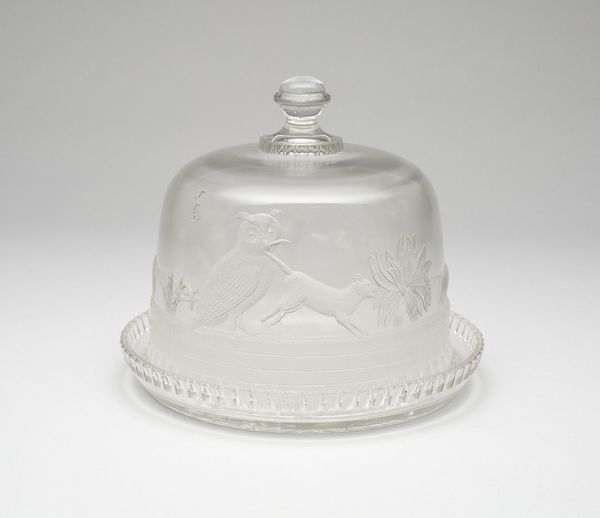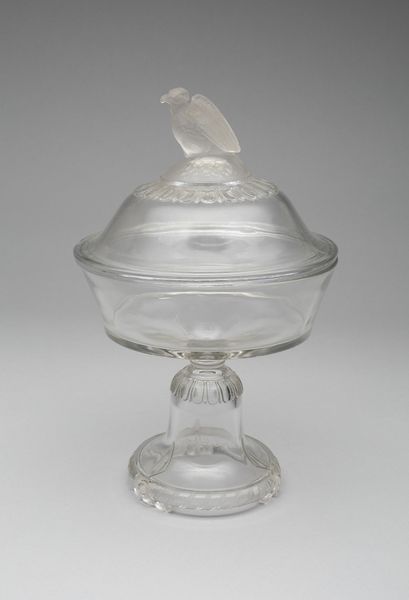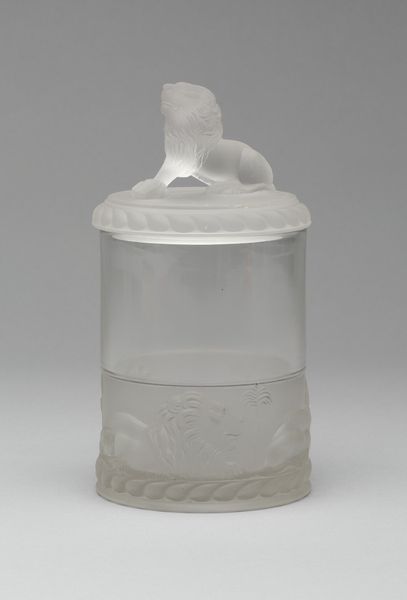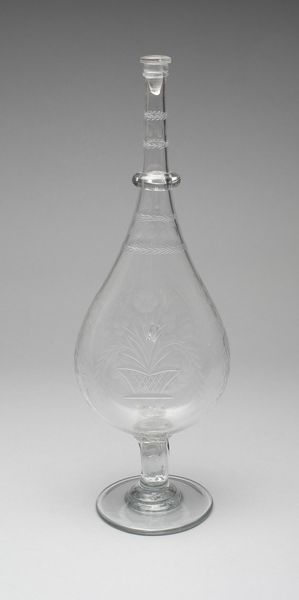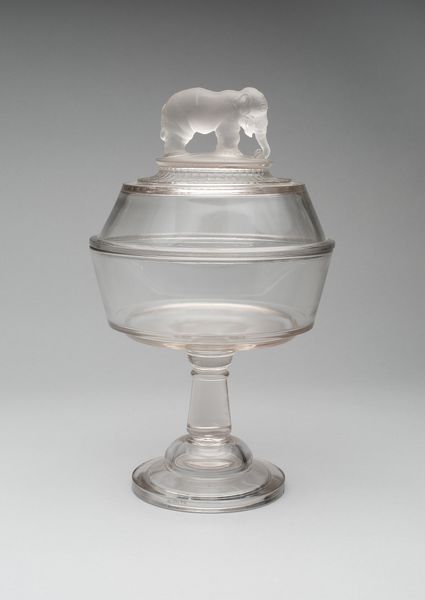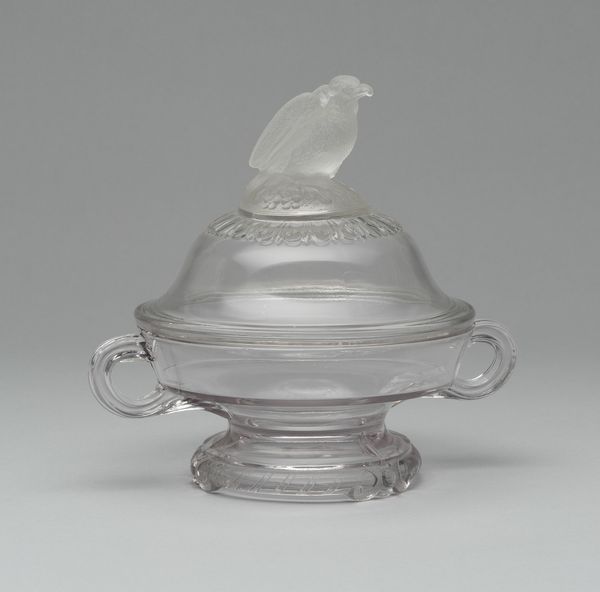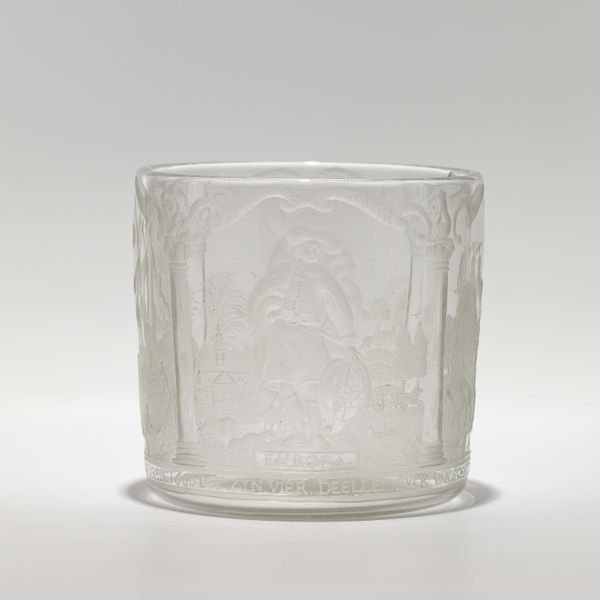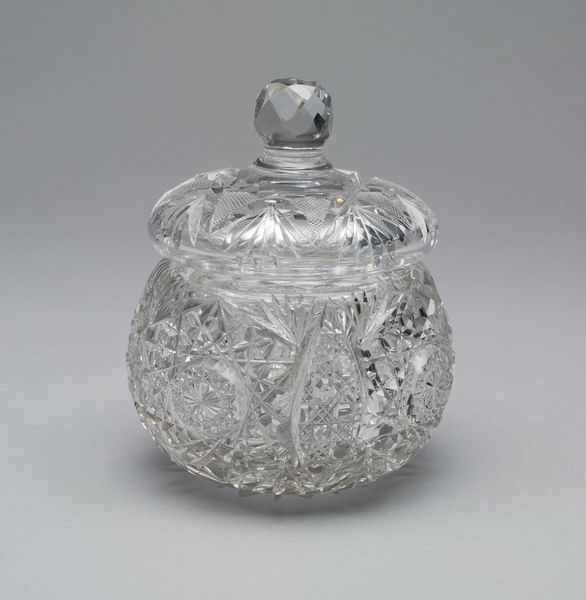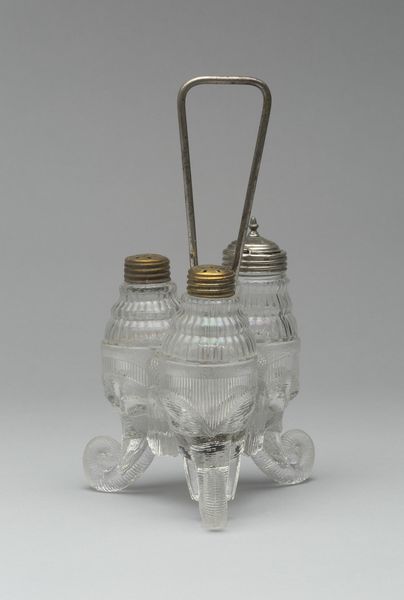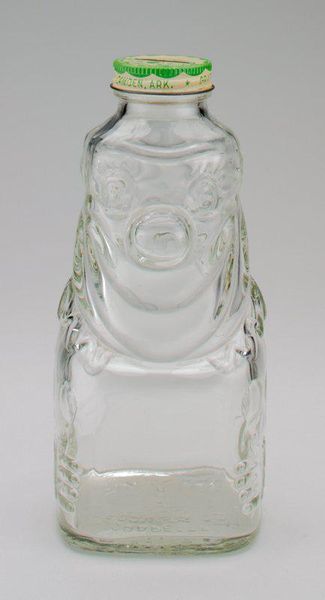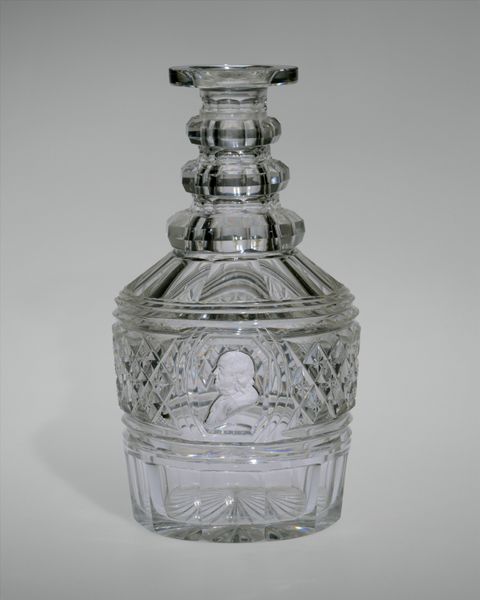
ceramic, glass
#
ceramic
#
glass
#
decorative-art
Dimensions: 18.4 × 13 cm (7 1/4 × 5 1/8 in.)
Copyright: Public Domain
Curator: Well, that's...unsettling. It’s fragile and beautiful, but also militaristic. All that clear glass somehow makes the patriotic imagery feel colder. Editor: I’m with you. The Art Institute of Chicago holds this so-called “Bullet & Emblem” pattern covered butter dish, dating to between 1870 and 1900. It appears to be unsigned, anonymous, and made from both glass and ceramic components. Curator: It’s a curious object to elevate to a decorative art status, no? I’m struck by the choice of clear glass. It almost emphasizes the manufactured nature of both the form and the emblems. Was this intended as everyday domestic ware, or something more…commemorative? Were these churned out in large quantities? Editor: Most likely the former. Following the Civil War, patriotic imagery saturated American culture, and consumer goods were no exception. The ubiquity of this imagery raises questions about how nationalism became woven into everyday life, transforming even the act of buttering bread into a potentially political act. How does this reflect the political climate during its period? Curator: Indeed. The means of production is fascinating here, too. Consider the moulds used for creating the detailed eagle emblem, the bullet form—how are we to examine labor in the era where the aesthetics of craft blended with new industrial technologies? It’s also worth mentioning how these objects reinforce class divides—not everyone could afford even decorative pieces, making access material, as well. Editor: That makes sense, the period saw enormous industrial expansion that changed economic relations for millions of people. This object exists in that precise tension between sentimental home life and the ever-increasing mechanisms of late capitalism and industrial consolidation. Was this type of dish a part of a larger pattern of commemorative goods for American citizens to purchase and own? It poses an interesting question. Curator: A question for materialists and historians to debate over tea, served, naturally, with plenty of butter! Editor: Indeed. A surprisingly thought-provoking piece, it shows us just how layered even seemingly simple objects can be, holding entire political and historical narratives within their fragile forms.
Comments
No comments
Be the first to comment and join the conversation on the ultimate creative platform.

